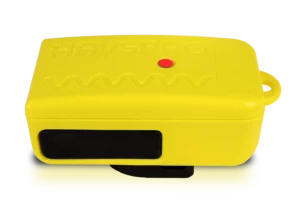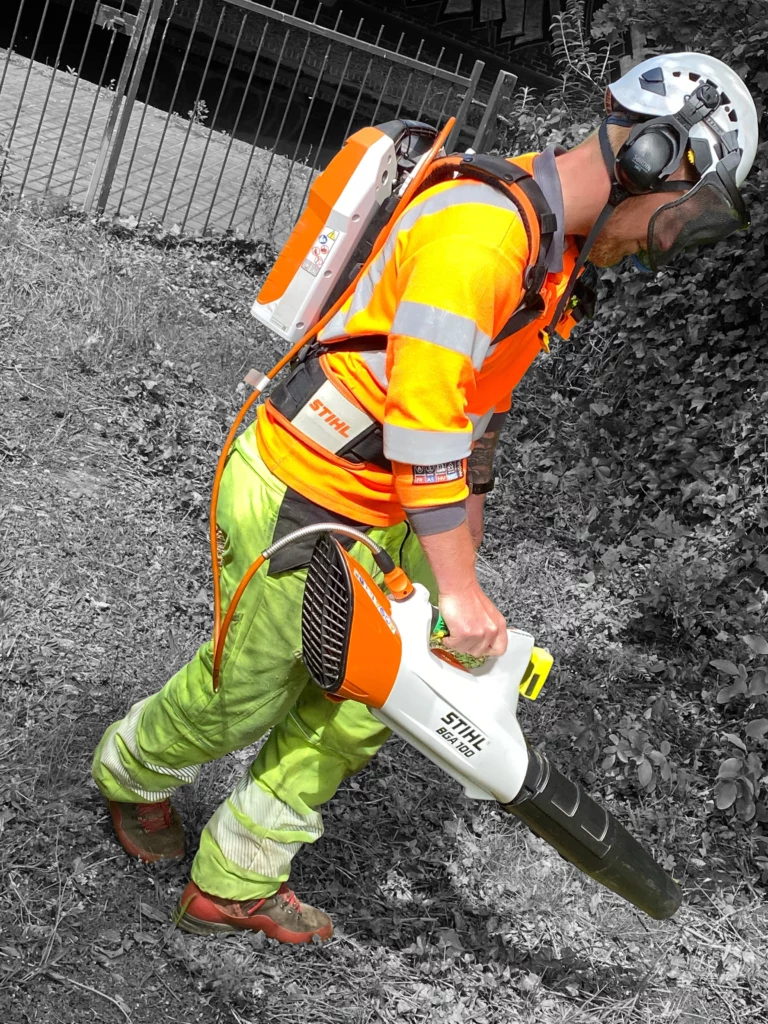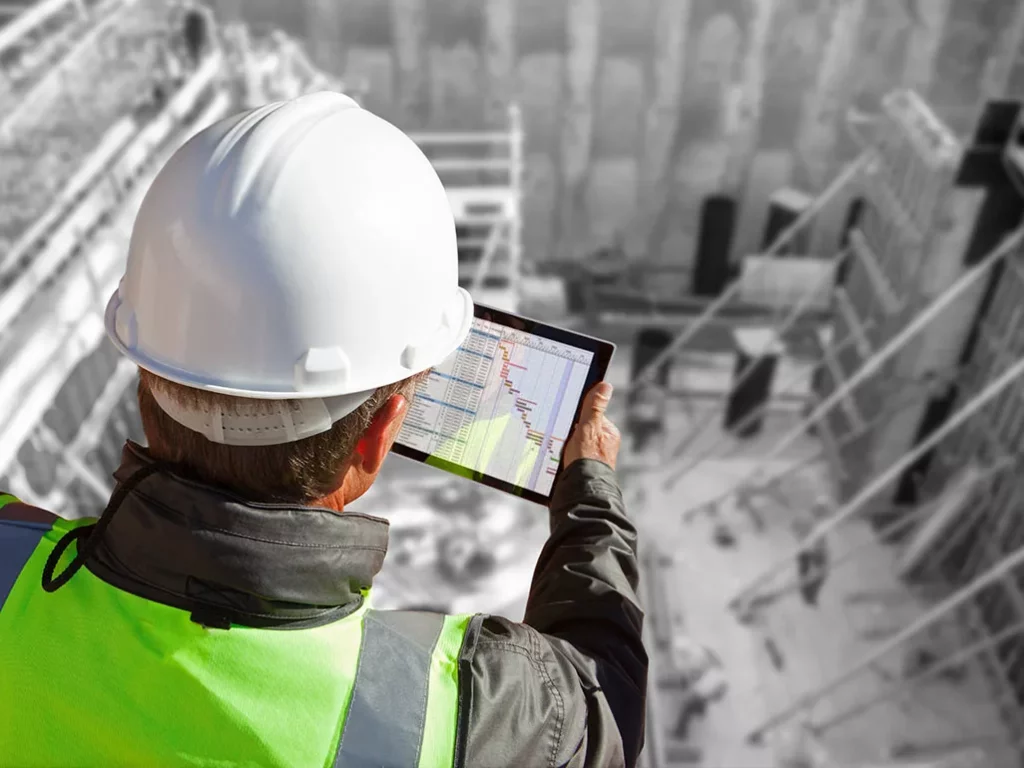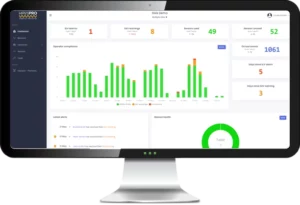If you want to comprehensively manage the risk of HAVS and other health conditions caused by over-exposure to vibration levels, then simply putting the time on tool and the manufacturers vibration levels into the HSE ready reckoner is not sufficient.
Here is our checklist of essentials that you need to have in place to ensure you are 100% managing the risk of HAVS and reducing it to ensure it is reasonably practicable:
1. Continuous measuring and monitoring
Whilst the HSE don’t mandate that companies need to continuously measure and monitor vibration levels to comply with the Control of Vibration at Work (2005), how can you say with any certainty, you are protecting your staff and business?
To be managing the risk of vibration exposure and be fully protecting your staff, you need to be continuously measuring and monitoring vibration levels. Only if you are using a system such as HAVSPRO, that uses a tri-axial accelerometer to measure and monitor vibration levels in real-time as it is experienced by the operator at that moment in time, can you claim to be fully aware of the actual risk of HAVS.
2. Work with accurate data
The range of vibration exposure experienced by users varies hugely. An example of this is a new drill, which comes with 2 different vibration emissions from the manufacturer as required by the Supply of Machinery (Safety) Regulations 2008.
The 2 different vibration rates come from the drill being used in 2 different materials; one for concrete and one for metal. When applying these numbers into the HSE ready reckoner for comparison, we get very different readings.
For one minute’s use at 2.5 MS2 gives zero points but at 9MS2 it exposes the user to 3 points. But what happens when it is in use for 37 minutes and that gives 100 HSE points (EAV) or 8 HSE points! The difference in exposure levels is incredible – and really highlights the need for continuous, accurate, real-time measuring and monitoring.
3. Alerts for all stakeholders
Once you have real-time, accurate data being captured and recorded, you need to make sure it is being used proactively to alert users, supervisors, managers and Directors of breaches and overall exposure levels.
 With the HAVSPRO, the user is alerted when they reach their EAV by the light on the sensor turning amber. Then, once the user reaches 90% of their ELV the light on the sensor will flash amber and red, followed by a solid red light when 100% of their ELV is reached.
With the HAVSPRO, the user is alerted when they reach their EAV by the light on the sensor turning amber. Then, once the user reaches 90% of their ELV the light on the sensor will flash amber and red, followed by a solid red light when 100% of their ELV is reached.
But if you are going to fully manage the risk of HAVS and excessive vibration levels, all stakeholders need to have access to accurate vibration exposure data. Supervisors and managers can be set up to receive text and / or email alerts every time an operative reaches their EAV as well as 90% and 100% of their ELV. This allows informed control measures to be applied through clear and accurate guidance and a dynamic risk assessment, as well as giving complete control to key members of staff to manage the risk to operators in real time, as the risk occurs, not after the event.
The HAVSPRO system also delivers a weekly email overview report to Directors ensuring vibration data is fully transparent and the onus of risk management is on everyone’s agenda.
4. Dashboard data
All vibration data is collected by the on-tool sensors and collated into a customisable dashboard which gives you a snapshot of the vibration levels across your business.
The dashboard contains a quick view of alert information in a RAG-rating bar chart, complete with the number of alerts for the last 7 days and the sensors used and number of on-tool evens.
But that’s only the beginning! The reporting suite will also show you;
- The number of ELV and EAV alerts in the last 7 days
 The system will also show you which sensors are being used so if you have operators who aren’t protecting themselves with vibration measuring, you can quickly identify them and remedy the situation.
The system will also show you which sensors are being used so if you have operators who aren’t protecting themselves with vibration measuring, you can quickly identify them and remedy the situation.- The reporting system also allows you to manage the exposure actions taken to ensure the risk is always being managed to as reasonably practicable (ALARP) – there is no point in continuous measuring and monitoring if no actions are taken!
- Number of days since the last EAV and ELV alerts Extensive operator information to establish which users have been using which tools, and when and all specific user vibration data.
- Tool usage – which we will cover in the following sections.
- Beacon health – so you can quickly identify any areas that may not be able to transmit vibration data to the cloud-based reporting system
The data captured in the reporting suite gives you everything you need to manage the risk of HAVS and excessive vibration levels with no arduous paperwork or time-consuming risk assessments.
5. Identify trends
The data captured in the reporting system highlights patterns in behaviours, that once identified, can be addressed. Examples of these include:
- The same operators frequently registering excessive vibration levels
- The same tool producing excessive vibration levels compared to others of the same make and model
- Specific shift or rota patterns that seem to be experiencing more exposure than others
- Operatives who aren’t using their sensors and so aren’t being protected by the system
Seeing the potential problems, before they cause damage means your workers and your business will always be keeping the risk of vibration exposure to an absolute minimum.
6. Data-driven decision making
 With accurate data comes the ability to make informed decisions quickly, and with confidence, because the guess work is taken away.
With accurate data comes the ability to make informed decisions quickly, and with confidence, because the guess work is taken away.
A great example of data-driven decision making is the need for investment in lower vibration-emitting tools such as electric/battery-powered tools. We have seen several customers use the data from the reporting system to build a business case for additional investment such as this. Alternatively, we have seen this data used to build businesses cases for the hire or tools rather than maintaining stock of unused tools as the business needs change.
There are daily decisions that can also be informed with the data from the dashboard such as; are worker and task allocations making vibration exposure as low as reasonably practicable? If there is a man on a sit on mower and a man using a hedge trimmer working together, could vibration levels be lowered through a rotation or the job allocation?
The data captured with the HAVSPRO system will also highlight any training and education needs within your workforce and lead to a change in the frequency of toolbox talks and education sessions.
7. Increase tool efficiency
In order to fully manage the risk of HAVS you need to understand how your tools are being used, and the HAVSPRO system can show you this because they are individually identifiable in the cloud-based dashboard.
The reporting system can show you;
- Tool rotation – what tool are being used each day and if the same few tools are used whilst others, similar tools are rarely used
- Tool attrition and performance – how the wear and tear of the tool is affecting the performance and vibration levels
- Tool servicing dates – when the tools were last serviced and if any are due for attention in line with the (PUWR) comply and prove compliance
- Consumables – Are the drill bits or blades sharp enough or the right ones for the job in hand? If a device is generating significantly higher vibration levels than expected, the consumables may well need some attention.
These insights are invaluable when it comes to budgeting and planning tool procurement. By understanding the overall performance of each tool, and all the associated variables that make up that performance, you can make evidence-based decision on tool budgeting and planning.
This type of data insight will also help you identify problems quickly and resolve them with minimal effort and disruption, increasing productivity and streamlining operations, all whilst minimising the risk to your workers.
8. Manage the training needs to help operatives better manage their risks
The final piece of the risk management puzzle is ensuring all operatives are aware of the risks of vibration exposure and what role they have to play in keeping the risks as low as possible.
The reporting system from HAVSPRO can help you identify vibration level trends for operators, highlighting the needs for additional training, either on a specific tool or for a particular task.
It can also help you to create and manage the Occupational health review process with your organisation.
Summary
If you aren’t implementing all of these tactics, you aren’t fully managing the risk of HAVS and other vibration exposure-related health conditions for your workers and your business.
Make sure you are protecting the next generation of workers from entirely preventable health issues, as well as your businesses from financial and legal penalties.
Together, we can #MakeHAVSHistory
Download our Brochure
It monitors individual tool vibration levels and the exposure each person has to it.
HAVSPRO then collates all this data and creates customisable reports to help you prevent overexposure.
Find out everything you need to know in our brochure – simply complete the form!
Find out more about HAVSPRO and how it can help you protect your staff and business: 01332 547 148 or you can download our Employers Guide to HAVS


 The system will also show you which sensors are being used so if you have operators who aren’t protecting themselves with vibration measuring, you can quickly identify them and remedy the situation.
The system will also show you which sensors are being used so if you have operators who aren’t protecting themselves with vibration measuring, you can quickly identify them and remedy the situation.